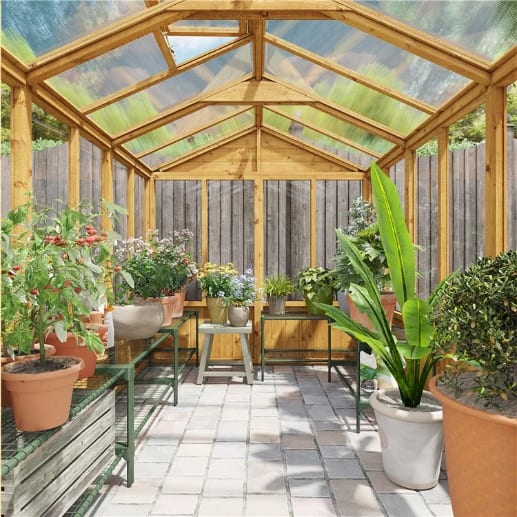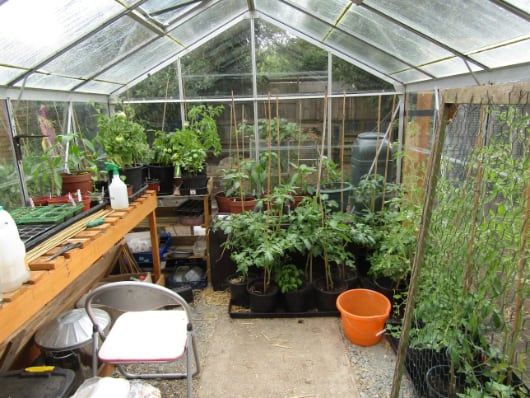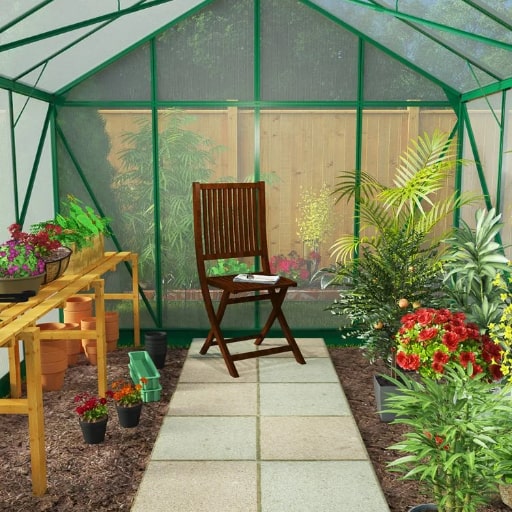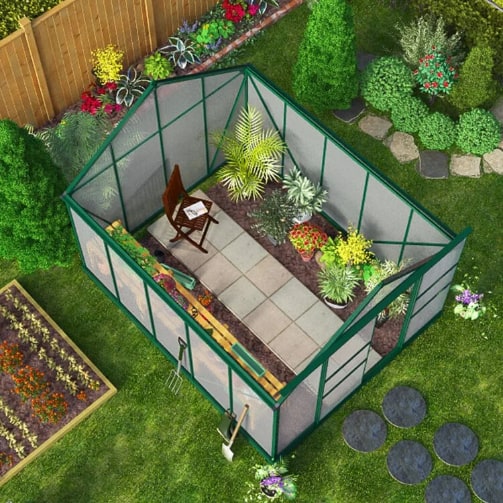Jump to:
Greenhouses are designed to support plants by providing the ideal environment for growth. However, these structures alone won’t be enough for successful greenhouse gardening. Certain requirements must be met, including adequate sunlight.
Here, we’ll explore the role of sunlight, the ideal exposure and the factors that affect it.
What is the Role of Sunlight in Greenhouse Cultivation?

Sunlight is the key ingredient fueling plant growth in the greenhouse. The pigment chlorophyll, found in plants, converts this energy into a usable form. This biochemical reaction, known as photosynthesis, provides the primary food and energy source for plants to thrive.
Thus, the answer to the question, ‘Do greenhouses need to be in the sun?’ is a resounding yes. The next question is: how much transparency and light transmission is necessary?
What is Transparency in the Greenhouse Environment?

(Image Credit: Wikimedia Commons)
Transparency describes how well the covering material allows sunlight to pass through. This impacts how hot do greenhouses get — simply put, how much heat is trapped inside.
Take the BillyOh Polycarbonate Lean-to Greenhouse unit, for instance. Its polycarbonate panels can transmit over 90% of light, comparable to glass. This ensures plants receive sufficient light transmission for healthy development.
How Much Does a Greenhouse Need Sun for Light Transmission?

The light transmission percentage shows how much sunlight hits the greenhouse panels and gets to the plants. So, the higher the light transmittance, the better. For instance, 83% light transmittance means that 83% of the incoming sunlight penetrates.
Tip: To achieve higher light transmissions, invest in a greenhouse with high-quality coverings. Your best option is units with glass or polycarbonate panels, like polycarbonate greenhouses. Another effective method is to optimise greenhouse placement, which will be discussed below.
Where Is the Best Place to Put a Greenhouse?

Where to put a greenhouse is more than just an “over here or right there” decision-making. This is because the orientation and placement significantly affect sunlight exposure. Factors you need to consider include the following:
- The type of greenhouse you have
- The plants you plan to grow
- The conditions in your garden or backyard
A freestanding wooden greenhouse can be placed wherever suitable on your property. For a lean-to design, it must be installed or built against an existing building wall. In either case, the unit should be on a level ground with well-draining soil away from standing water.
Plants that demand full sun thrive in areas directly exposed to sunlight for several hours a day. Meanwhile, those favouring partial shade benefit from shelter during peak daytime heat.
Feel free to read our guide ‘How to Position Your Greenhouse: Choosing the Best Spot’ to learn more.
How to Calculate Sunlight Requirements for Your Greenhouse?
You can use the Daily Light Integral (DLI) calculator to measure. Through this, you can estimate how much sunlight your greenhouse garden will need.
Different plant species have varying light requirements. Their recommended Daily Light Integral (DLI) ranges reflect these specific needs. Generally, high-light plants, such as tomatoes or peppers, thrive in DLIs between 15-25 mol/m²/day.
Tip: If natural light is insufficient in your area, consider using artificial lights, such as LED or high-pressure sodium (HPS) lamps. Consult plant-specific lighting guidelines or seek expert advice for optimal results.
Up next on your reading list: Do Greenhouses Need Full Sun or Can They Be in Shade?










